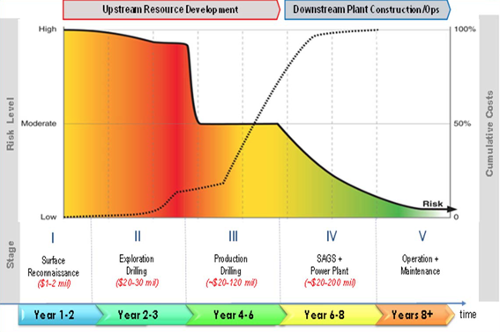The East African Rift System (EARS) could be a major source of clean energy for East Africa’s economies. However, more than 95% of the region’s total geothermal potential (~20GWe) remains untapped. East Africa is home to over 400 million people living in vibrant, emerging markets that suffer severe power constraints.
So why is this locally abundant, zero-carbon energy source so underdeveloped?
Major barriers in East Africa
As many as 12 East African countries have some geothermal resources, and at least six have resources with sufficient heat for power generation. Despite this, only two (Ethiopia and Kenya) have constructed geothermal power plants. While Kenya has had success with geothermal since the early 1980s, significant barriers impede scale up in the greater region:
- High early stage risk for financiers. Geothermal exploration can take years of surveying, drilling, and testing before a resource can be proven. Banks are generally unwilling to provide financing for unproven resources, at least not at an attractive rate. Additionally, some East African governments offer low feed-in tariffs for geothermal generation, which makes investing even more unattractive.
- Lack of transparency in concessions. Most countries in the region still govern geothermal development with mining laws, which are inherently inappropriate for the specific pricing and commercial characteristics of the geothermal sector. Inadequate regulatory frameworks lead to a lack of transparency in resource concessioning, which makes it difficult for project developers to secure licenses, permits, and Power Purchase Agreements (PPAs).
- Shortage of technical skills. With the exception of Kenya, East Africa lacks a robust, skilled, local geothermal workforce and technical capacity. The African Geothermal Training Center (AGCE) was established in June 2018 in Kenya by the African Union Commission and UN Environment (UNEP), but in most cases, significant foreign expertise is still required to fully develop these resources.
- Local political and environmental opposition. Political instability, the unilateral cancellation of contracts, and community opposition or socio-political unrest all strongly deter private developers from investing.
- Limited awareness of geothermal direct use applications. Policymakers, entrepreneurs and local communities have limited awareness of the potential benefits of direct use applications for commercial and industrial purposes. Consequently, existing risk mitigation instruments and other incentives generally do not cover direct use projects. An exception is the Geothermal Risk Mitigation Fund (GRMF), which recently made direct use applications eligible for grant support, provided they are combined with power generation applications.
Several programs exist to try and address these challenges. Across 12 East African countries, the GRMF provides risk mitigation and works to expand awareness of geothermal development to promote investment. It plays a crucial role in minimizing the upfront cost associated with early stage exploration by financing eligible costs of up to 20% for infrastructure upgrade, 80% for surface studies and 40% for drilling programs. It also provides technical assistance and capacity building in partnership with UNEP, Icelandic International Development Agency (ICEIDA), Nordic Development Fund (NDF), New Zealand Africa Geothermal Facility, US East Africa Geothermal Program (US-EAGP), and others.
FIGURE 1: Map of the Geothermal early-stage risk level versus time (source: adopted from the World Bank, GRMF and Power Africa).


